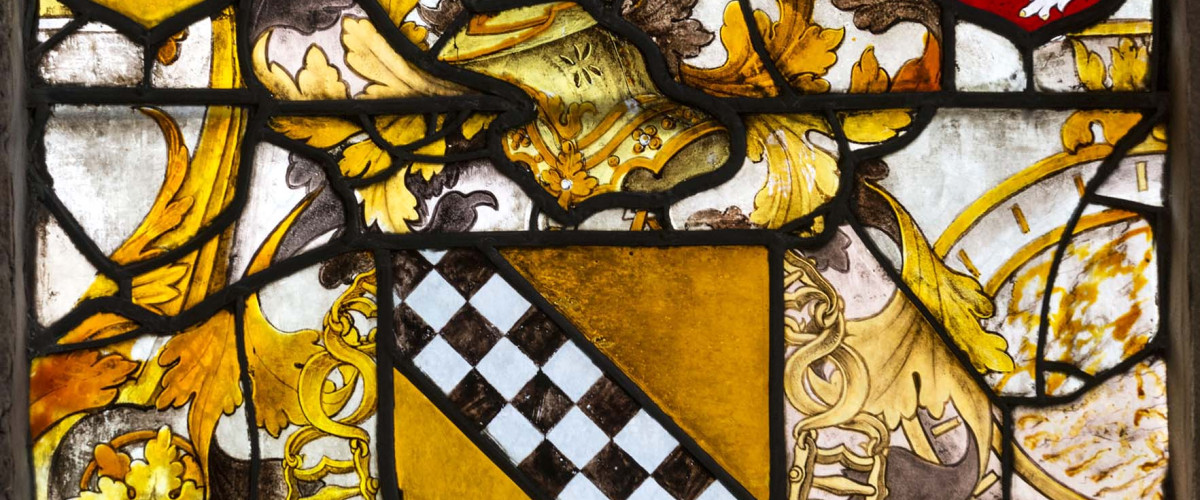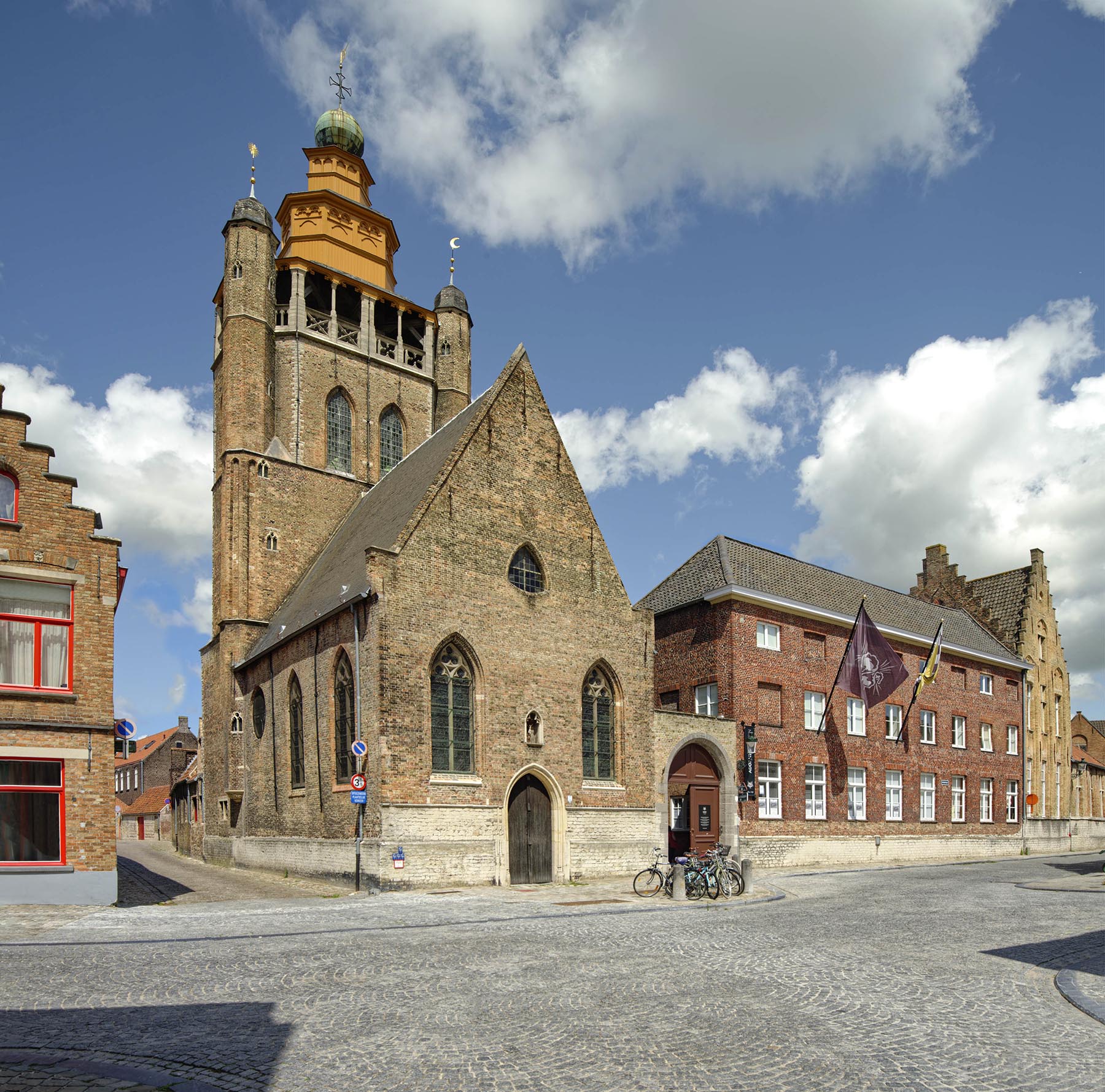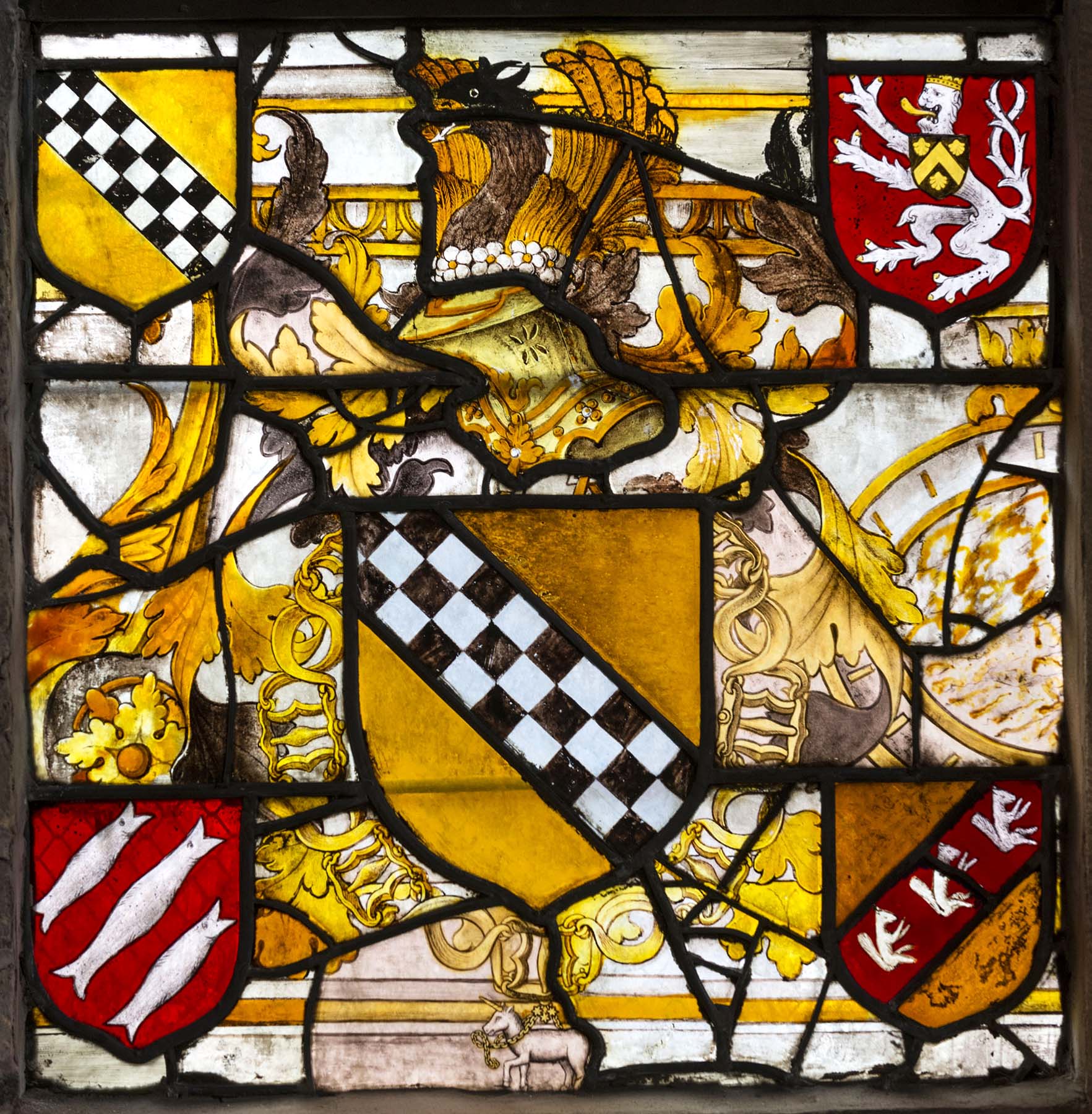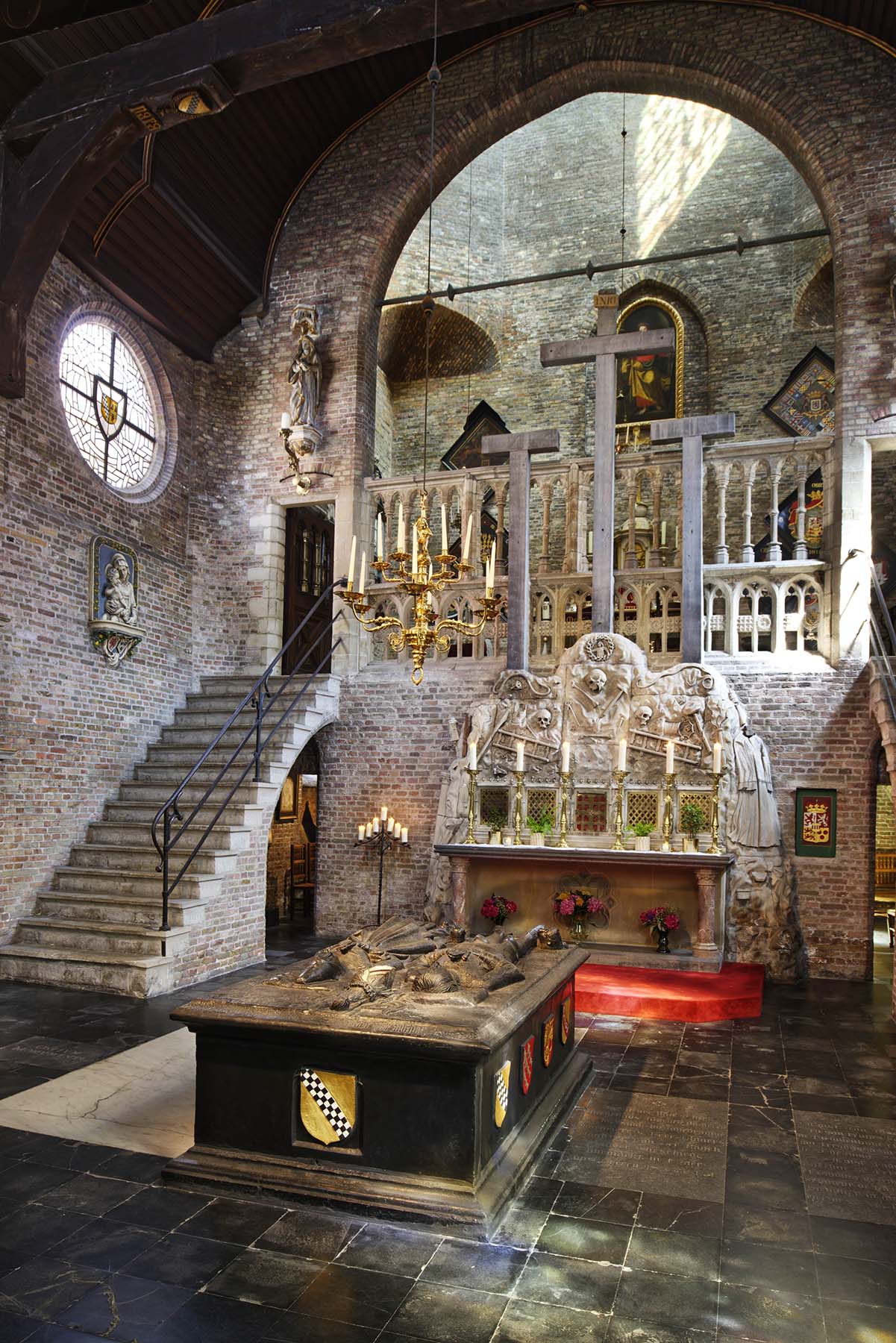At the Adornes domain in Bruges, visitors can explore the Jerusalem Chapel with all its medieval treasures, from the grave monument of Anselm Adornes and Margaretha van der Banck to the colourful stained glass windows. There is certainly a lot of history to be discovered at this wonderful domain!
The Adornes domain and Jerusalem Chapel
The Adorno family from Genua in northern Italy established the Adornes domain in the 15th century. It consisted of a wonderful garden, a townhouse and an imposing chapel. For his Jerusalem Chapel, Pieter II Adornes received permission from Pope Martin V. He did not only want to spread the Word of God, but knowledge too. He used the chapel as a public library and gave it a collection dedicated primarily to literature, history and the sciences. His son Anselm Adornes continued the tradition. Though he tore down the chapel and rebuilt it as a replica of the Church of the Holy Sepulchre in Jerusalem. He also had the townhouse renovated and added a few almshouses, charitable organisations for the sick and poor. Through the centuries, the domain fulfilled various functions: it has been a convent, a school and later a lace museum. Now it tells its own history, but all the while the goal has remained the same: strive for knowledge and religion.
The stained glass windows in the Jerusalem Chapel
The stained glass windows in the Jerusalem Chapel were made around 1560 and are the oldest in Bruges. The windows were likely commissioned by brothers Jacob (1523-1572) and Jeroom Adornes (1522-1558), whom we recognise in one of the windows, together with their patron saints. There we can also read the inscription Para Tutum, the motto of Anselm Adornes, who commissioned the current chapel. It means ‘Prepare us a safe journey’ and refers to his pilgrimage and pilgrim’s blessing. Anselm himself can also be seen in the northeastern window with his coat of arms and the Scottish Order of the Unicorn. The stained glass windows tell us the long and magnificent story of the Adornes family in an enchanting display of light and colour.
Triptych of Christ on the Cross
Mayor of Brussels Jan de la Coste was also a member of the Adornes family. In the 16th century, he commissioned the Christ on the Cross triptych. In the centre panel, we see Christ on the Cross, attended by Mary and the Apostle John with thick clouds and the unmistakable towers of Bruges in the background. A threatening skull lies on the rocks beneath the Cross. On the left panel, we see Jan de la Coste with his patron saint Saint John the Baptist and his seven sons. Jeroom, his eldest son and the man who commissioned the stained glass windows, looks straight at us. On the right panel, we recognise Jan de la Coste’s wife Catharina Metteneye. She is depicted wearing an impressive red cloak with her coat of arms. Her four daughters, including two nuns, have joined her.
Practical information
Disabled access
- Easy to access for the disabled.



